- Have any questions?
- +86 18868944843
- roy@nbthe.com
How to avoid “skills” during a tennis training
How to avoid “skills” during a tennis training
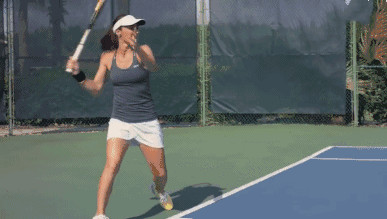
Nowadays, the racket and the line are all integrated with a large amount of technology, which makes the level of tennis sports continue to rise, and the competitive ability of tennis is also greatly improved. Whether it is a professional athlete or an amateur, no matter what type of play, no matter what the performance of the venue, the basic elements to pay attention to complete a high-quality shot are the same, these basic elements mainly include: hitting the ball Depth, angle, speed, radians, rotation.
Master these basic elements of tennis technology (five degrees), and will not “blindly practice” in the weekday training. The following “five degrees” will be introduced to everyone one by one. Tennis fans must step by step in the training on weekdays. Mastered, I hope to help you.
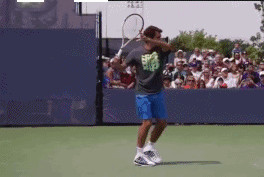
First, depth
The depth of the shot is the position at which the ball hits the opponent’s effective field and is close to the bottom line. If the point of hitting the ball is too far from the bottom line, this is what we often call “shocking up.” Depth is the core of completing a high-quality shot and is the main evaluation criterion for the quality of the game.
Depth – the positive effect of deepening the ball:
1. Maximize your opponent’s distance from the court and gain more preparation time for yourself.
2. Reduce your opponent’s return angle and let yourself get the least range of running.
3. As the opponent’s return distance is longer, the hitting speed is reduced, creating more offensive opportunities for himself.
4. The landing speed of the ball is accelerated, which destroys the opponent’s batting rhythm and strengthens the opponent’s oppression.
5. Keep your opponent away from the net and prevent your opponent from scoring online.
6. Force the opponent to hit the shallow ball and put himself in an offensive state.
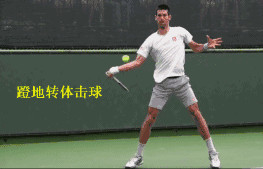
Second, the angle
The angle of the shot is usually the position where the ball is hit on both sides of the opponent’s field and close to the sideline when hitting the ball. This is called the “shooting angle”. The purpose of the angle is to increase the distance between the catcher and the hitting point. The farther the hitting point is from the catcher, the greater the angle. Being able to play the ball out of the angle is an important manifestation of the improvement of tennis skills and an important basis for getting rid of the primary level.
Angle – is the initial stage of the use of game tactics, it has the following positive effects:
1. Pulling the opponent out of the field, leaving the opponent out of the defensive position, kicked off the attack.
2. Increase the range of the opponent’s running, forcing the opponent to lose points because the pace is not in place.
3. Due to the angle, a large angle shot can score directly.
4. It can effectively limit the opponent’s return route and prepare for the next shot.
5. A precise angle can produce a high- quality cross ball (broken tennis).
6. In general, a large angle of return is also a good way to restrict the opponent’s return route.
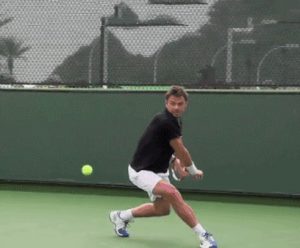
Third, the speed
Speed refers to the short-term ball from one side of the field to the effective field on the other side. The time for the ball to fly in the air is shortened and the flight arc is small. Fast hitting is a high-level hitting quality and is a difficult driving skill. A high-quality fast shot is a good combination of good body coordination and fast swings and good hitting points. Batting points and swinging arms are not difficult for many tennis fans, but it is not so easy to use the “coordination chain” to hit the ball. This is also a difficult point.
The positive effects of speed:
1. Fast hitting can force the opponent to not hit the ball in time, thus reducing the opponent’s return quality.
2. A high -quality quick shot can score directly.
3. Using a quick shot can destroy the opponent’s batting rhythm and give the opponent devastating oppression.
4. Effectively compress the opponent’s preparation time, so that the opponent should not be overwhelmed.
5. Fast hitting is usually very penetrating, and the opponent’s ability to hit the ball will be severely tested.
6. You can often use a quick shot when you play back the ball with a bad time.
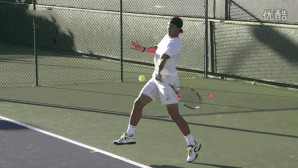
Fourth, the arc
Arc is the flight arc of the ball before it falls into the effective field of the opponent after hitting the ball. The important components of the arc of the shot include hitting distance, arc curvature, arc height, and art direction. The main factor affecting the arc is the angle at which the shot is shot. The angle of the shot refers to the angle between the moment the ball has just left the racket and the horizontal plane. The greater the angle of the ball, the greater the height of the arc. A reasonable arc is not only an important guarantee for the stability of the ball, but also can improve the impact of the ball after landing.
Archness – an important guarantee of the stability of play, its positive effect:
1. Allowing you more time to return to the defensive position by the arc time.
2. The greater the arc, the stronger the bounce after the ball falls, which can bring more trouble to the opponent to a certain extent.
3. The wonderful arc is also the perfect embodiment of a high golf tactic.
4. Use the longer lag time of the arc to ease the opponent’s offensive rhythm.
5. The curvature of the shot helps to improve the stability of the shot.
6. Changing the arc of the ball can increase the threat of the ball.
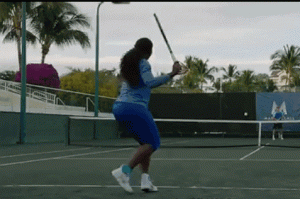
V. Rotation
Rotation is the friction generated by the racquet at the moment of contact with the ball when hitting the ball. The greater the friction, the greater the rotation of the shot. Different rotations also produce some irregular bounces. Such as the topspin, the ball will bounce higher after landing, the speed of the bounce will be faster; the lower spin, the ball bounces lower after landing, the front impulse is stronger. In addition, the rotation can extend the dwell time of the ball on the racquet, and the longer the racquet is in contact with the ball, the better the control of the ball. Therefore, adding some rotation when hitting the ball can effectively improve the ball control ability.
Rotation – disturbs the opponent’s batting rhythm and its positive effect:
1. It can effectively accelerate the ball again after landing, and once again enhances the bounce impact of the ball.
2. Rotation can make the ball raise the angle of the ball again and expand the range of the opponent’s running.
3. In the case of the same hitting speed, the size of the rotation directly affects the difficulty of hitting the ball. The greater the rotation, the more trouble it creates for the opponent.
4. Rotation can make the arc of the ball more perfect. Such as: breaking tennis, picking high balls, putting small balls and so on.
5. Using the rotation to destroy the opponent’s hitting rhythm is definitely the best choice to suppress the opponent.
6. Increasing the rotation of the ball helps improve ball handling.
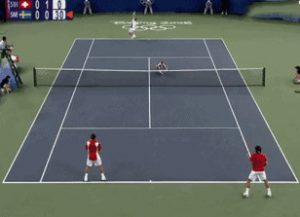
The reasonable combination of depth, angle, speed, curvature, and rotation is crucial. It is important to note that the arc of the shot is an indispensable part of every shot and is a necessary guarantee to improve the stability of the shot.
In the arena, we usually combine different hitting methods according to the different needs of the tactics. We must know that each additional “degree” will put forward higher requirements for the player’s technical ability. In general, there are three combinations of “degrees” to produce a high- quality return.
E.g:
Arc + depth + angle = high quality bottom line ball;
Arc + Rotation + Depth = high quality picking ball;
Arc + angle + rotation = high quality through the ball;
Arc + Angle + Speed = high quality offensive ball.
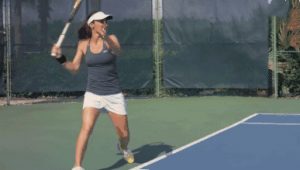
I believe that every tennis enthusiast is very eager to improve the quality of their shots, so how to improve the quality of hitting is the most concerned issue. The arc of the shot is an essential element of every shot, so the key link is the added factor after the arc. Here are a few basic examples for your reference:
Example 1: Bottom line ball = radians + depth
Depth is the primary feature of high- quality bottom line shots. We should pay more attention to how to return the ball to the “deep” link when hitting the ball at the bottom line. Therefore, the first problem to be solved when playing a higher quality bottom line ball is the depth of the shot. When we first learn to play tennis, the coach will always remind you to move forward a little more. This is also a necessary condition for playing the depth ball. The arc of the shot is also strong support for improving the depth of play. As the level of technology increases, more and more “degrees” can be used. For example: bottom line = radians + depth + angle + speed + rotation, imagine how high the bottom line hit quality is.
Example 2: Offensive ball = radians + angle
The main purpose of the offensive ball is to use the venue to fully mobilize the opponent, so the angle becomes the primary problem of the offensive ball. Usually, if you want to play the offensive ball, you can open the angle of the shot. On this basis, the arc of the shot is an important guarantee for not hitting the ball. With the improvement of the technical level and the improvement of the quality of the offensive, the depth of the offensive ball, the speed of the hitting ball, and the like can be gradually pursued.
Through these two examples, we can clearly see that the primary problem that each shot needs to pay attention to is different. The key link is that we must accurately grasp the core problem of each shot and then increase it sequentially. The quality of the shot.
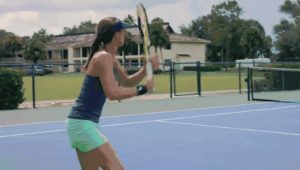
More tennis knowledge is here.
